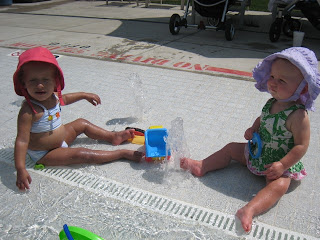At our first endocrinology appointment following diagnosis, we were handed a pamphlet to order a medical alert bracelet and a temporary bracelet. It was a plasticky thing that opened with little scraps of paper inside to write information on. I wasn't sure who came up with that as a good idea because my 4 year old proceeded to dismantle it and toss the papers to the ground. I'm pretty sure I tossed it in the trash as we exited the hospital. When I got home, I began my research on bracelets that might be able to keep up with a kid.

Adrenal Insufficiency requires immediate attention in the case of an emergency. On multiple sites, it is listed as the first reason a medical identification tag is needed. Yes this is because it starts with "a", but the fact is- it's listed. Many parents reason that their child will never be unattended and therefore jewelry is not necessary. Kids wander off, accidents happen- it is necessary. When minutes make the difference between life and death, a medical alert bracelet can make sure your child gets the medicines they need. I know far too many parents who spent months and years trying to find out what was wrong with their child, only to finally be told it was adrenal insufficiency. Why would we expect emergency medical professionals to be able to diagnose it in a few minutes?
If you do a web search for medical ID bracelets, you will find dozens of retailers. You can get ready made, custom made, bangly, sparkly, sporty and pricey bracelets. They are gold, silver, titanium and swarovsky crystal. You can get them at Walmart, Costco, Amazon and other retailers- even ebay. You can also find necklaces, pendants, watches, keychains, shoelace charms and USB flash drives. You have sites that tell you to put every piece of identifiable information possible in a 2 inch spot and others suggest less. So what's a parent to do?
WHAT DO I GET?
Plan for the worst case scenario- your child is found unconscious and no one knows what is wrong or their history. It is most useful for them to have identification on their person. What is the first thing an emergency responder does when they check a victim? They take their pulse. This is why bracelets are so popular and useful- the wrist is used to get a pulse. The neck can also be used and is the second site generally looked at to make sure there is an open airway. A down side to necklaces is that they can be overlooked if they are long or fall down into the clothing and sometimes they get in the way of every day activities. There are watches, shoelace tags and keychains- but emergency personnel are not to trained to look for those- they are trained to look for a bracelet or necklace upon initial exam. These identifiers are useful reminders though for caregivers or less emergent cases.


You want the identification to have a caduceus(serpent and staff) and cross(some have 4 arms like a t or an x and some have 6 like an *) symbol on it- that is universally recognized as the medical alert logo. It can be on a big charm or a little charm- but you want that charm to be visible and readable. You want it to be activity appropriate. If your child is not very active- a light beaded model might work. My daughter snapped off 2 stainless steel models and a sportsband model in a 6 month period. I generally go for the buy one get one free sales when I can. If nothing else, I have a spare. I did notice on the more delicate model we had, it had a raised medical symbol- that sheered right off- I would recommend getting one with the engraved medical symbol. I also noticed the sportsband got grubby and dirty and started to smell after awhile- definitely something to think about if you have a kiddo who is already sensitive to germs. I also recommend getting one right away- it took a little while for my daughter to get used to her bracelet, but now she doesn't notice it anymore.
WHAT DO I PUT ON A MEDICAL ID BRACELET?
Put yourself in the emergency situation and in the role of the emergency medical professional. What piece of information does that person need in the first minutes of an emergency to treat your child as quickly as possible?
Adrenal Insufficiency. I put it first, so it will be the first thing they see, it is a rare condition, they may or may not immediately know what treatment or medication is needed.
Hydrocortisone(or whatever medication your medical professional recommends for your child during an emergency.)
NAME. For my child, I want them to know her name so they can address her or if she is not with me- I also want them to be able identify her and be able to contact someone who can help inform them on her condition, whether it be a neighbor or school official or coach.
Phone Number. I put my cell number since I always carry it with me. Some people put a doctor's number- it should be a number to someone who knows about your child's condition and will answer! If you are uncertain what to put, your physician can be really helpful in this area. Both the Medic Alert and American Medical ID sites have recommendations. Some tags can be engraved on front and back, some only on the back- this can be a consideration if your child has mulitple conditions. This is not a time to engrave lactose intolerance or color blindness, we are looking at acute and life threatening conditions, like adrenal insufficiency.
WHERE DO I GET MEDICAL ID BRACELET?
This is the tough one. The answer depends entirely on what you want. One of the most well known retailers is
Medicalert.com They offer jewelry as well as a medical database service with your child's history in it. Emergency personnel can call the 24 hour service and be alerted to the child's meds, history and needs. There is a service charge and a monthly fee for this that runs $20-$30 a month. There is a good selection of ID tags, with rounded edges. Although I prefer their jewelry, you cannot buy it without joining their service and I don't need it, so I go to
americanmedical-id.com . The prices are reasonable, they too offer an optional database service and a fair selection but there are some drawbacks. One of the drawbacks is that the bracelets do not come in half sizes- this is fairly problematic with kids. Too tight- they are miserable- too loose and it is gone. I solved this problem by enlisting a few links of chain and some help from a jeweler neighbor. The edges are only more rounded in the more expensive models, which is disappointing. My daughter is very active and I worried about her scratching or gouging herself, but it hasn't been a problem. Another complaint is that the engraving is difficult to see. The manufacturer carries a warranty on this but also emphasizes that the engraving is legible when looked at directly and not casually or from a distance as to protect the person's information. I think that is a valid point. There is merit to having your information out there when necessary and transmitting it with neon lights.
If you are in the market for kid specific, sporty, prettier, custom, or unique looking jewelry- friends have reccommended two places. Lauren's Hope @
Laurenshope.com and Petite Baubles Boutique @
petitebaublesboutique.com Many jewelers carry medic alert bracelets in their stores- I have seen them at Walmart even. Some can do engraving on site and others have to mail it out. If you find a piece you really like and that works- you can always have it professionally engraved and many engravers can incorporate the medical alert symbol. The most important thing is that you find something your child will wear and that they wear it! It could save their life!
Medicalert.com
americanmedical-id.com
Laurenshope.com
petitebaublesboutique.com













